Take a step back in time and set out on a thrilling journey through Africa’s rich and fascinating history. This continent is home to some of the most fascinating historical sites in the entire world. From Zimbabwe’s towering stone buildings to Timbuktu’s intricately carved mosques, Mother Nature took her time on Africa.
So, join us as we explore the past to learn the stories behind Africa’s ancient monuments, colonial buildings, and everything in between. As we explore the vivid hues, entrancing sounds, and tantalizing flavors of Africa’s past and present, this journey promises to be a feast for the senses
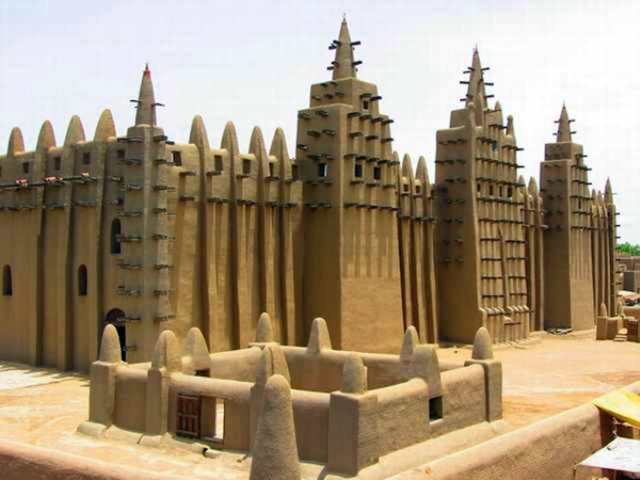
Ancient Ruins
The stories of the ancient civilizations that once flourished in these regions are told through the fascinating sites of ancient ruins, which offer us a window into the past.
Many ancient ruins standing for thousands of years can be found in Africa. Some are among the most magnificent and breathtaking architectural wonders of antiquity.
Below are some of Africa’s most well-known historical sites that contain ruins from past civilizations:
The Pyramids of Giza
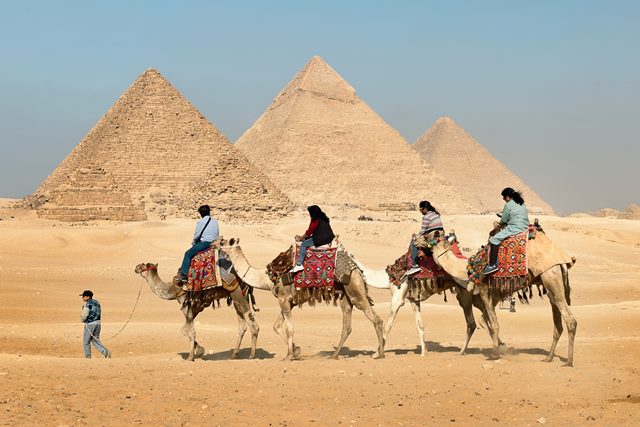
The Pyramids of Giza is one of the Seven Wonders of the Ancient World is the Egyptian pyramid complex. And the only one standing. The pyramids were constructed over a period of 80 years during the Old Kingdom era, between 2589 and 2504 BC.
More than 2 million blocks of limestone were used to construct the Great Pyramid, the largest pyramid, which is thought to weigh more than 6 million tonnes.
Interestingly, the pyramids were built to safeguard the pharaohs’ bodies and possessions in the afterlife whilst also acting as their tombs.
Although the Great Pyramid still stands, historical sources have cited over 100 pyramids in Egypt. Some of them have become ruins, while others show signs of deterioration.
Read: Why Is the Great Pyramid of Giza So Special?
The Great Zimbabwe Ruins
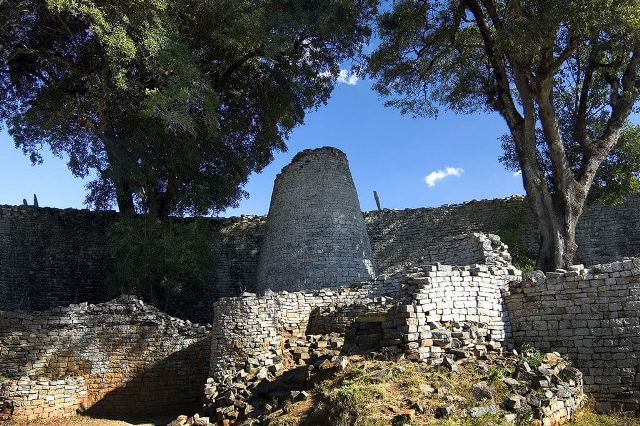
The Great Zimbabwe Ruins, which date back to the eleventh century, are situated in southeast Zimbabwe. The ruins comprise a collection of stone walls, towers, and other buildings.
They are thought to have been the site of the Kingdom of Zimbabwe’s capital – a significant commercial hub that oversaw the exchange of goods like gold, ivory, and other commodities between the interior of Africa and the Indian Ocean.
Moreover, the granite blocks that make up the ruins were precisely fitted together using only the stonemason’s tools and no mortar.
The Lalibela Rock-Hewn Churches
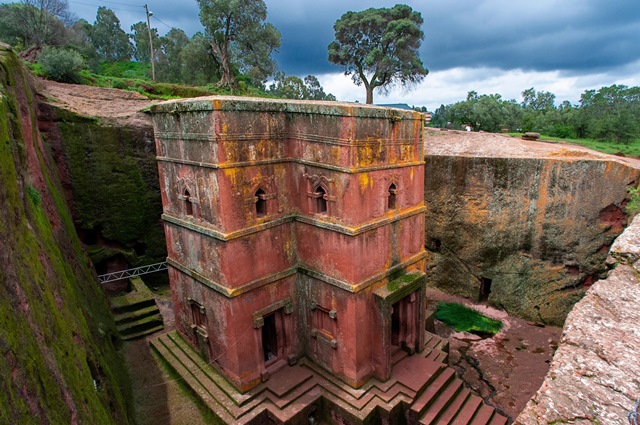
The Rock-Hewn Churches of Lalibela, situated in Ethiopia, is simply one of the most incredible architectural feats you’ll ever see.
A system of tunnels and passageways connects the churches, which were hewn out of solid rock in the 12th century.
These were purposely built for Ethiopian Christians who were prevented from a pilgrimage to the Holy Land because of Muslim control of the region. The churches served as a second Jerusalem for them.
We Design & Develop Websites, Android & iOS Apps
Looking to transform your digital presence? We specialize in creating stunning websites and powerful mobile apps for Android and iOS. Let us bring your vision to life with innovative, tailored solutions!
Get Started TodayThe Ruins of Carthage
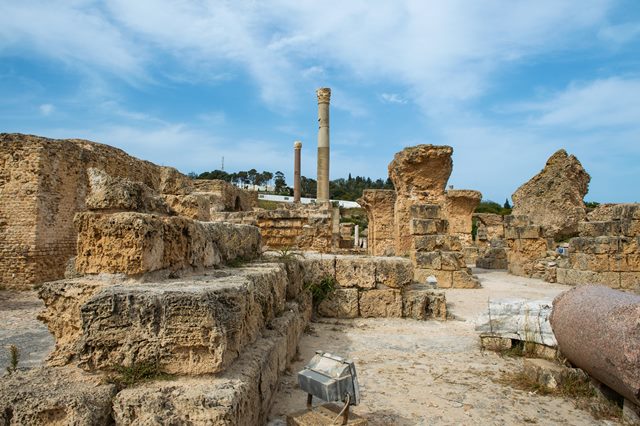
Carthage was a significant trading city that fought Rome for dominance of the Mediterranean. The remains of the historic city, which the Phoenicians established in the ninth century BC, can be found in Tunisia. These ruins contain the remains of temples, theatres, and other buildings.
The Kingdom of Aksum
The Kingdom of Aksum, located in northern Ethiopia, ruled over trade routes from the Mediterranean to India during ancient times.
Obelisks, palaces, and tombs can be found among the ruins of the Kingdom of Aksum and the Church of Our Lady Mary of Zion, which is thought to be the location of the Ark of the Covenant.
Read: Ancient African Kingdoms Before Modern Borders
Historical Sites Built With Medieval and Islamic Architecture
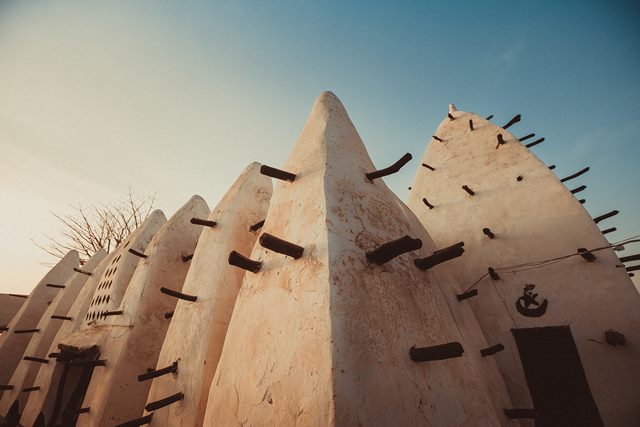
Medieval and Islamic architectural styles have strongly influenced African history and culture over the years.
Both designs and details are detailed, reflecting the religious and cultural beliefs of the societies that produced them.
Here, we will look at some of Africa’s most well-known examples of medieval and Islamic architecture, such as the Great Mosque of Djenne, the Mosque of Sankore, the Alhambra, the Mosque of Timbuktu, and the Great Mosque of Kairouan.
The Great Mosque of Djenne

The Great Mosque of Djenne in Mali is one of Africa’s most impressive historical sites. It is an excellent example of Sudano-Sahelian architecture constructed entirely from mud bricks and plaster in the 13th century.
In addition, the mosque has a central courtyard that can hold up to 10,000 worshippers and three substantial towers or minarets. Being one of the most important landmarks in Mali, the mosque is decorated with carefully cut-out carvings and designs, including geometric patterns.
The Mosque of Sankore
Mali’s golden age birthed another Sudano-Sahelian architecture in the form of the Mosque of Sankore. Built in the 14th century and still one of Africa’s greatest historical sites, the Sankore was formerly a part of the University of Timbuktu.
The higher institution of learning was among the world’s most significant Islamic educational institutions.
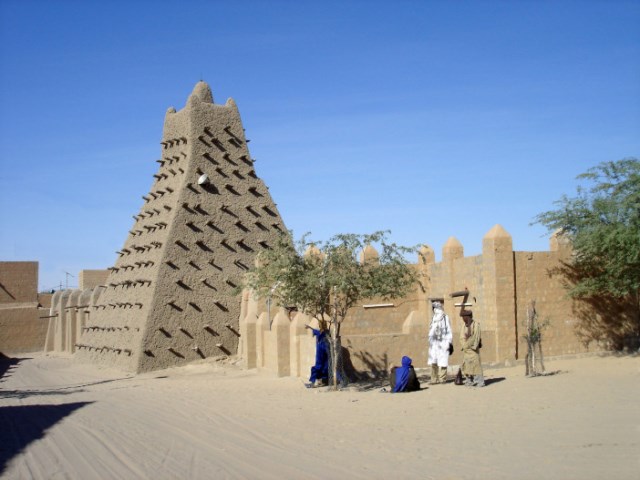
The Mosque of Timbuktu
This is yet another great architectural wonder situated in Mali. The Timbuktu Mosque was constructed in the 14th century and still stands today despite being made almost entirely of earth. The mosque also has a large prayer hall that can hold up to 2,000 worshippers and a central courtyard.
In addition, the mosque’s design is considered a unique fusion of Islamic and African architectural styles. It is decorated with geometric patterns and calligraphy.
We Design & Develop Websites, Android & iOS Apps
Looking to transform your digital presence? We specialize in creating stunning websites and powerful mobile apps for Android and iOS. Let us bring your vision to life with innovative, tailored solutions!
Get Started TodayThe Great Mosque of Kairouan

Also known as the Mosque of Uqba, the Great Mosque of Kairouan sits in Tunisia and dates back to the 9th century.
The fortress-like architectural wonder is one of North Africa’s best historical sites, with a sizable courtyard and prayer hall that can host up to 20,000 worshippers. The mosque’s design is also decorated with intricate tile work and carvings.
Historical African Sites From Colonial Architecture
Due to the influence of colonialism on the continent, many historical sites from the colonial era still stand today.
Colonial architecture in Africa leaves a distinctive and frequently contentious legacy. From the Portuguese’s imposing forts and trading posts to the opulent palaces and mansions of the British, French, and Belgian empires.
Here are some of them:
The Castle of Sao Jorge da Mina, Ghana
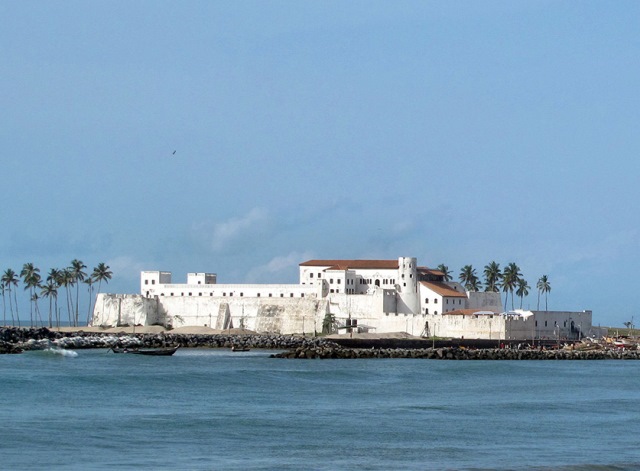
The Castle of Sao Jorge da Mina in Ghana is among Africa’s most notable examples of colonial architecture. It is also one of Africa’s most fascinating historical sites that’s worth a visit.
Built by the Portuguese in the late 15th century, the castle was a significant trading hub for goods from West Africa, including gold.
The castle also features a central courtyard, underground dungeons where slaves were housed before being transported to the Americas, and imposing stone walls and towers.
The Union Buildings in Pretoria, South Africa
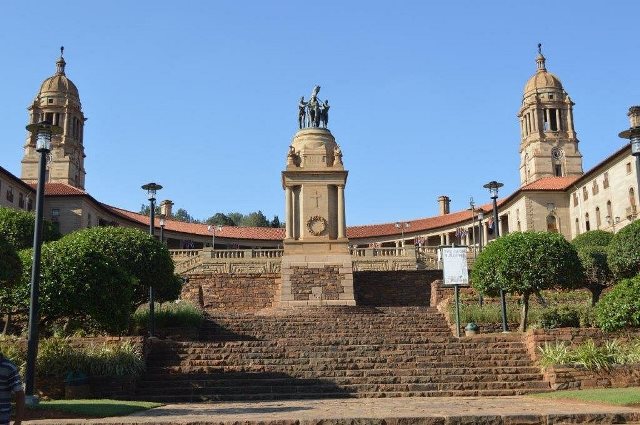
South Africa’s colonial history is bound to produce some historical sites. And the Union Buildings in Pretoria, South Africa, is proof of another well-known colonial architecture in Africa.
Constructed by the British in the early 20th century, the Union Buildings served as the Union of South Africa’s administrative hub and are now the president’s official residence.
The surrounding gardens are a well-liked tourist destination, and the buildings have a neoclassical design with giant pillars and a central dome.
The Historic City of Stone Town in Zanzibar, East Africa
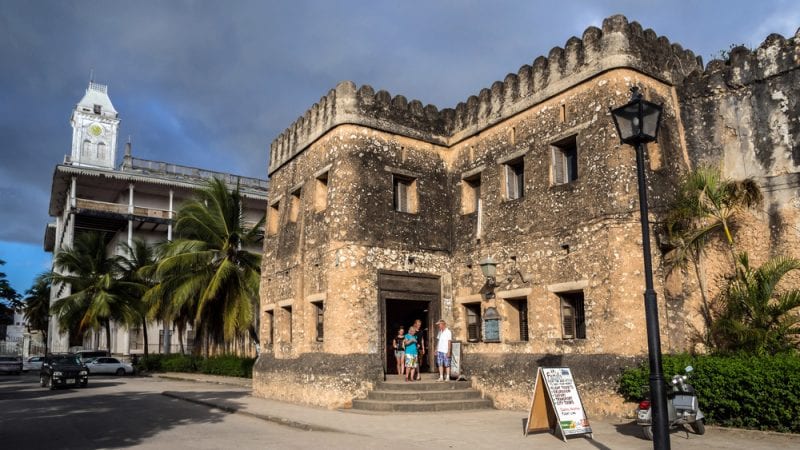
As a UNESCO World Heritage Site, the historic city of Stone Town in Zanzibar, located in East Africa, is renowned for its unique blend of Swahili, Arab, and European architecture.
The town’s narrow streets are lined with coral stone buildings, ornate wooden balconies, and maze-like carvings and decorations. It was a significant trading port in the Indian Ocean during the 19th century.
The Grand Mosque of Dakar, Senegal
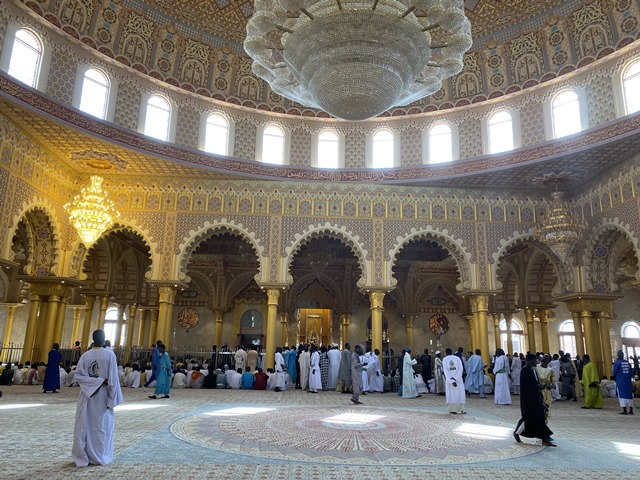
The Grand Mosque of Dakar in Senegal is arguably the best example of the French colonial legacy in Africa.
We Design & Develop Websites, Android & iOS Apps
Looking to transform your digital presence? We specialize in creating stunning websites and powerful mobile apps for Android and iOS. Let us bring your vision to life with innovative, tailored solutions!
Get Started TodayBuilt in the early 20th century, the mosque is an impressive representation of French Colonial architecture. Its gigantic dome, elaborate minarets, and detailed tile work make it of the many tourist-friendly historical sites.
Moreover, the mosque is a well-known landmark in Dakar and is regarded as one of Senegal’s most significant places of worship.
The Art Deco Architecture, Kinshasa
Finally, the stunning Art Deco architecture of Kinshasa, the capital of the Democratic Republic of the Congo, is a reflection of the Belgian colonial legacy in Africa.
Numerous structures in the city demonstrate the mid-20th-century influence of European modernism. This is especially noticeable in their curved facades, geometric shapes, and ornate details.
The resilient, inventive, and diverse nature of Africans is reflected in the continent’s rich and varied history.
By acknowledging and embracing Africa’s history, we can eliminate myths, and advance a more inclusive global narrative. This will also help us gain insightful knowledge of the difficulties and opportunities the world is currently facing.
Africa’s history is ultimately a source of pride and inspiration. And it must be honored, preserved, and shared for future generations.
Before you go…
Hey, thank you for reading this blog to the end. I hope it was helpful. Let me tell you a little bit about Nicholas Idoko Technologies. We help businesses and companies build an online presence by developing web, mobile, desktop, and blockchain applications.
We also help aspiring software developers and programmers learn the skills they need to have a successful career. Take your first step to becoming a programming boss by joining our Learn To Code academy today!
Be sure to contact us if you need more information or have any questions! We are readily available.
Put Your Tech Company on the Map!
Get featured on Nicholas Idoko’s Blog for just $200. Showcase your business, boost credibility, and reach a growing audience eager for tech solutions.
Publish Now










